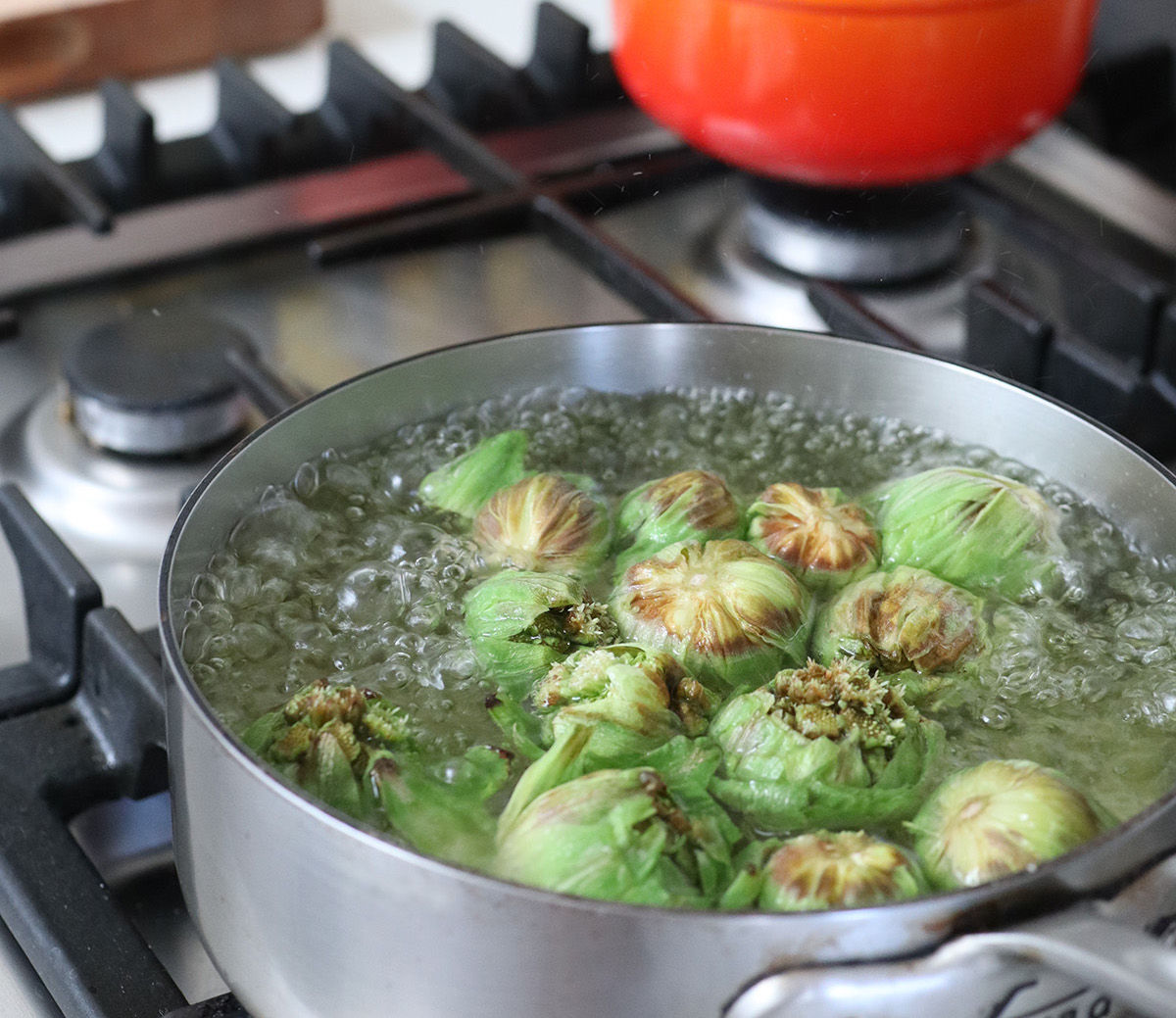

Fuki is the (transliterated) Japanese name for the perennial plant butterbur.
Fuki is the (transliterated) Japanese name for the perennial plant butterbur.
Photography by Marie Viljoen.
Photography by Marie Viljoen.
Butterburs belong to the genus Petasites, and North America is home to a cold-hardy native species as well as introduced butterburs, which are valued as ornamentals in gardens.
Butterburs belong to the genus Petasites, and North America is home to a cold-hardy native species as well as introduced butterburs, which are valued as ornamentals in gardens.
Japanese butterbur, Petasites japonicus. Japanese butterbur is Petasites japonicus, and its chartreuse-shaded buds break ground many weeks before the vernal equinox in the Northeast, where it is mildly invasive.
Japanese butterbur, Petasites japonicus. Japanese butterbur is Petasites japonicus, and its chartreuse-shaded buds break ground many weeks before the vernal equinox in the Northeast, where it is mildly invasive.
Swipe up to see the post
[galley_caption]Artist Justice Wolf of Little Creek Ink, standing beneath mature fuki leaves.
[galley_caption]Artist Justice Wolf of Little Creek Ink, standing beneath mature fuki leaves.
The densely budded but diminutive flower buds of Japanese butterbur give way to leaves that are otherworldly in scale, like a botanical throwback to dinosaur times.
The densely budded but diminutive flower buds of Japanese butterbur give way to leaves that are otherworldly in scale, like a botanical throwback to dinosaur times.
Petasites hybridus has burgundy buds. A burgundy-flowered butterbur, Petasites hybridus, is native to Europe and parts of Asia.
Petasites hybridus has burgundy buds. A burgundy-flowered butterbur, Petasites hybridus, is native to Europe and parts of Asia.
Swipe up to see the post
In British Columbia, forager Matt McAllister collects the buds of Petasites frigidus for market.
In British Columbia, forager Matt McAllister collects the buds of Petasites frigidus for market.
This native North American butterbur comprises four different varieties, occurring from northern California through the Pacific Northwest, Canada and Alaska, into the Arctic, and across the continent, to the Atlantic coast.
This native North American butterbur comprises four different varieties, occurring from northern California through the Pacific Northwest, Canada and Alaska, into the Arctic, and across the continent, to the Atlantic coast.
A Hudson Valley collection of early, mostly invasive, spring edibles, including Japanese butterbur.
A Hudson Valley collection of early, mostly invasive, spring edibles, including Japanese butterbur.
Butterbur buds, or fuki no to. So that is how I prepare my fuki buds for tempura and for chopping and stirring into miso.
Butterbur buds, or fuki no to. So that is how I prepare my fuki buds for tempura and for chopping and stirring into miso.
When boiled, the exposed part of fuki buds oxidises quickly.
When boiled, the exposed part of fuki buds oxidises quickly.
Boiling until just tender takes about 4 minutes. At this stage their flavor is very aromatic and reminiscent of the smell of crushed chrysanthemum flowers or cooked chrysanthemum greens (another East Asian vegetable).
Boiling until just tender takes about 4 minutes. At this stage their flavor is very aromatic and reminiscent of the smell of crushed chrysanthemum flowers or cooked chrysanthemum greens (another East Asian vegetable).
After a tempura batter dip, another three minutes in boiling avocado oil.
After a tempura batter dip, another three minutes in boiling avocado oil.
Plump fuki no to tempura are delicious dipped into shoyu laced with yuzu syrup.
Plump fuki no to tempura are delicious dipped into shoyu laced with yuzu syrup.
Boiled fuki no to with miso, mirin, and vinegar.
Boiled fuki no to with miso, mirin, and vinegar.
Fuki no to miso with steamed rice.
Fuki no to miso with steamed rice.
The fragrance of fuki buds is enhanced by salty miso and the sweetness of mirin with a touch of vinegar.
The fragrance of fuki buds is enhanced by salty miso and the sweetness of mirin with a touch of vinegar.
Fuki Buds with Miso
Fuki Buds with Miso
Bring a pot of water to a boil. Leave until they are cold, then roll them up in an absorbent kitchen towel and squeeze gently to remove excess moisture.
Bring a pot of water to a boil. Leave until they are cold, then roll them up in an absorbent kitchen towel and squeeze gently to remove excess moisture.